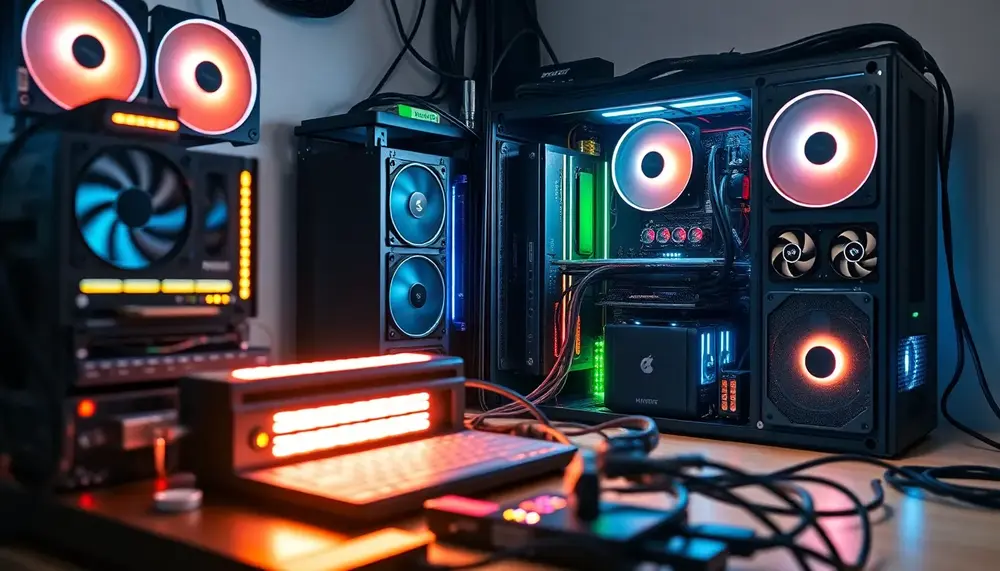Crypto Mining
Crypto Mining
Welcome to our glossary entry where we decipher the enigma of Crypto Mining in relation to Bitcoin Mining. Read on to understand all the buzzwords you've always wanted to know, made simple.
Introduction to Crypto Mining
Crypto Mining is an essential element of the blockchain ecosystem. It refers to the process of verifying and adding transactions to a blockchain ledger, thereby creating new units of cryptocurrency. It's akin to miners digging for gold, the difference being that this mining happens virtually.
Crypto Mining vs Bitcoin Mining
While the term 'Crypto Mining' is an umbrella term, 'Bitcoin Mining' refers specifically to the mining of Bitcoin, the world's first and most famous cryptocurrency. It's important to note that the principles are universal across all cryptocurrencies, but some features could differ based on the specific cryptocurrency involved.
The Crypto Mining Process
Crypto Mining involves solving complex math problems to validate transactions. Miners compete against each other to solve these, and the first one to crack it earns the right to add the next block of transactions to the blockchain, earning new coins as a reward. This is the 'Proof of Work' consensus algorithm predominantly used in Bitcoin mining.
The Role of Crypto Mining
Crypto Mining plays a vital role in maintaining the integrity of the blockchain. It adds security to the network by ensuring the authenticity of transactions. Miners really are the backbone of the cryptocurrency network.
The Reward of Crypto Mining
The reward for successful Crypto Mining varies with each cryptocurrency. For Bitcoin mining, the reward is halved every 210,000 blocks – an event called Halving. As of 2021, the reward stands at 6.25 bitcoins for each block mined, adding allure to the mining process.
We hope this comprehensive glossary entry has helped in demystifying the work of Crypto Mining in the world of Bitcoin and beyond. Keep digging and happy mining!
Blog Posts with the term: Crypto Mining

The article discusses the initial investment required for crypto mining in India, emphasizing costs related to hardware, setup, and software. It also highlights key technical specifications needed for mining rigs, such as GPUs and cooling systems, while stressing the importance...

Cloud mining allows individuals to lease processing power from remote data centers for cryptocurrency mining, offering convenience and lower upfront costs but potentially reduced earnings and risks of scams. Hardware mining involves owning equipment with greater control and profit potential...

A mining pool is a collaborative group of miners who combine their computational resources to increase the likelihood of successfully mining cryptocurrency blocks and sharing rewards, essential due to the high power demands that make solo mining nearly impossible. Setting...

Bitcoin mining apps can transform your device into a mini mining rig, but with the market flooded by both genuine and dubious options, it's crucial to verify platforms like Google Play for reliability through download numbers, ratings, user reviews, and...

Bitcoin mining pools are groups of miners who combine their computing power to mine Bitcoin blocks and share the rewards. Joining a mining pool increases the frequency of payouts and reduces the volatility of the mining process, making it a...

Crypto mining on a Mac is possible but requires careful planning due to hardware limitations and software compatibility issues. To optimize performance, choose the right mining software like CGMiner or MacMiner, manage background processes, update your system regularly, and consider...

Setting up a crypto mining server involves selecting optimal hardware like GPUs or ASICs, building infrastructure with adequate power and cooling, installing suitable software, and ensuring legal compliance for efficient operations. This process requires careful planning to optimize performance while...

The article provides a comprehensive guide on selecting the right cryptocurrency mining pools, emphasizing understanding basic concepts like pool types and benefits such as increased reward chances and steady income. It also highlights key features to consider, including payout schemes,...

This article provides an introduction to Bitcoin Mining ROI (Return on Investment) and explains how it is calculated. It discusses the factors that affect mining profitability, such as electricity costs, hash rate, block reward, Bitcoin price, and mining difficulty. It...

USDT, or Tether, is a stablecoin pegged to the US Dollar and issued by Tether Limited through fiat collateralization, ensuring each token is backed by real-world assets. It plays a crucial role in cryptocurrency trading due to its stability and...

Choosing the right crypto mining OS is essential for maximizing efficiency and profitability, with options like Hive OS, minerstat OS, RaveOS, and SimpleMining OS offering unique features tailored to different needs. These specialized operating systems provide tools for performance optimization,...

The RTX 3060 offers a variable hashrate from 20 to over 100 Mh/s depending on the algorithm, impacting mining profitability through power efficiency and consumption; maximizing profits involves managing electricity costs, overclocking carefully, selecting profitable coins, and possibly joining a...

Qatar is emerging as a potential hub for crypto mining, leveraging its natural gas reserves and sustainable energy initiatives to offer cost-effective power solutions while developing legal frameworks to regulate the industry. Challenges include regulatory clarity, environmental sustainability, infrastructure scaling,...

Australia has become a significant player in crypto mining due to its vast land, abundant renewable energy resources, and technological advancements. However, miners face challenges such as high initial setup costs for renewable energy, regulatory uncertainty, environmental concerns, market volatility,...

